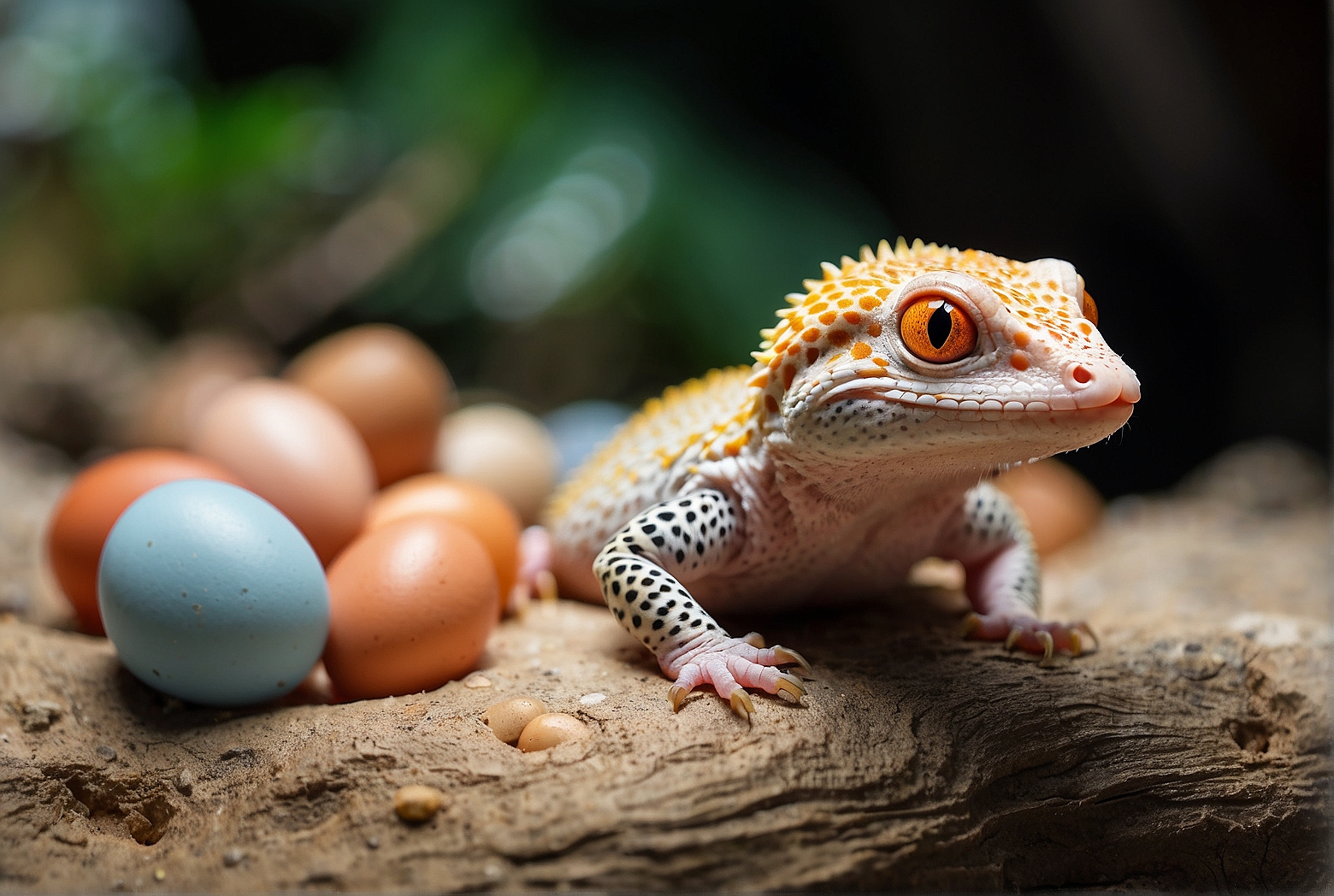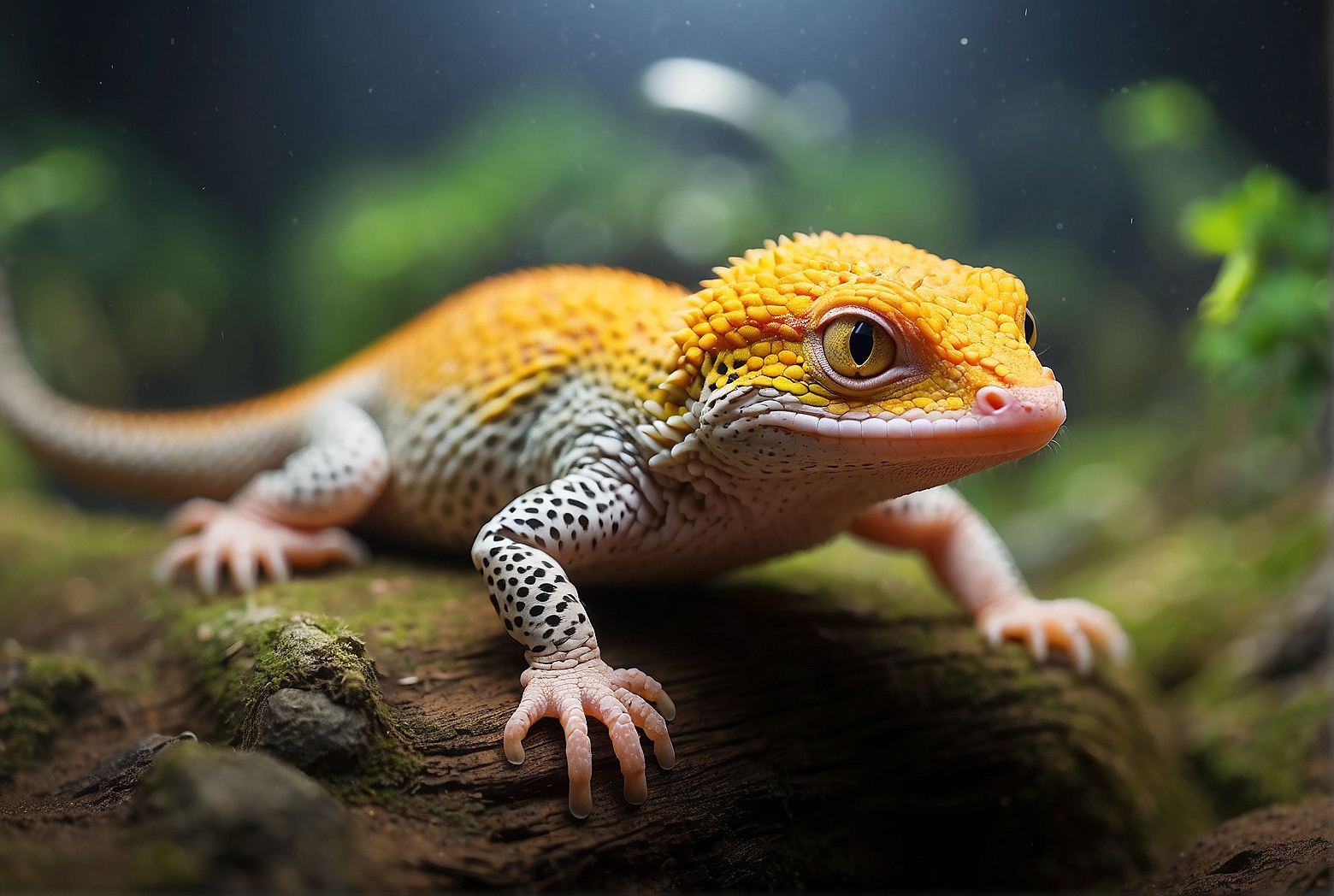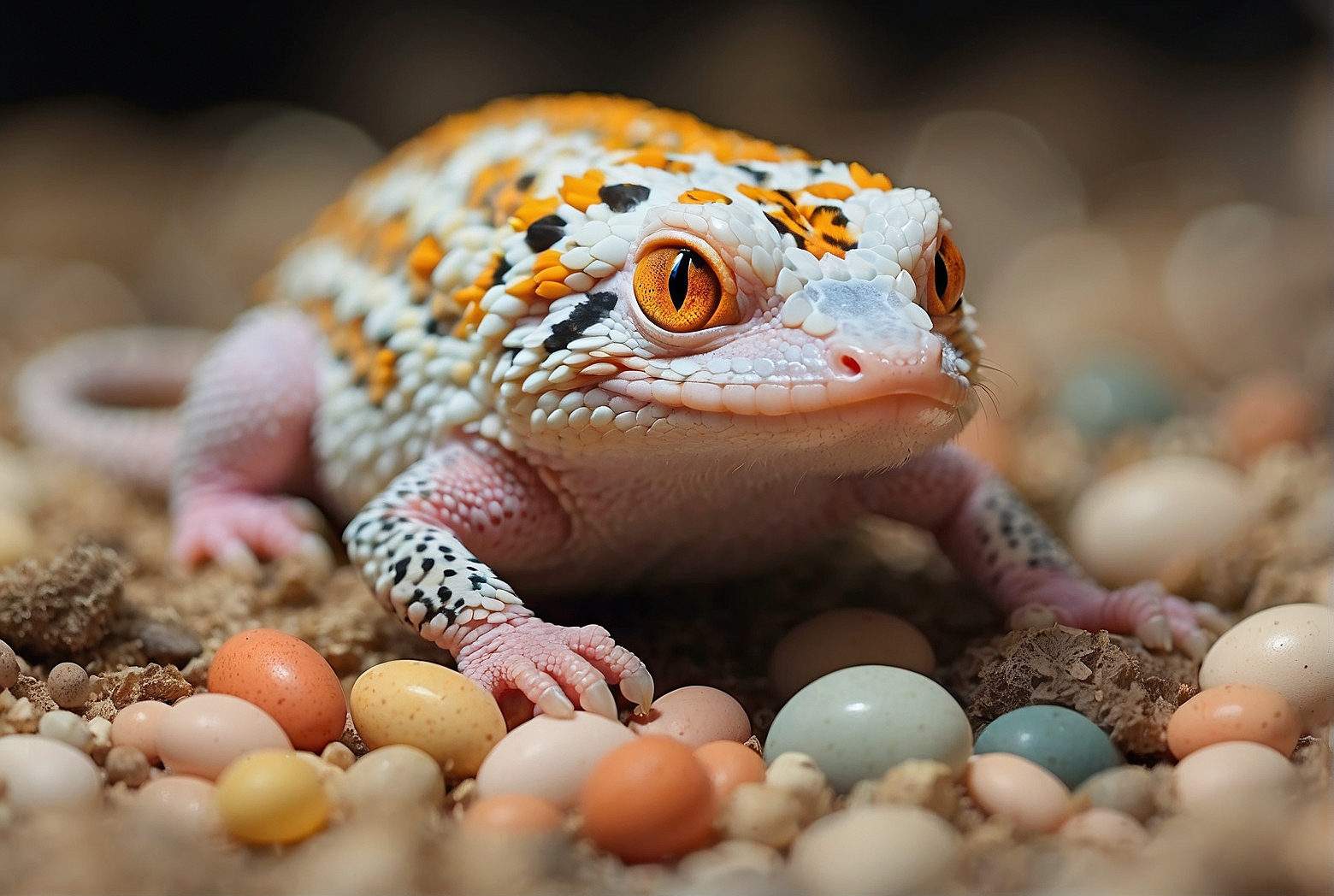Imagine the excitement and anticipation of finding a clutch of leopard gecko eggs in your terrarium! Now the question arises, what do you do next? With the arrival of these precious little eggs, it’s important to know how to properly care for them to ensure their successful hatching. In this article, you’ll discover everything you need to know about what to do with leopard gecko eggs, from creating the perfect incubation environment to monitoring their development. So, let’s dive into this fascinating world of reptile reproduction and learn how to give these tiny treasures the best chance at a healthy hatchling.
Incubation
Creating an incubator
When it comes to successfully incubating leopard gecko eggs, creating a suitable incubator is essential. You can use a variety of methods to create a DIY incubator, such as using a plastic container or repurposing an aquarium. Ensure that the container is well-ventilated and has a secure lid to maintain the desired temperature and humidity levels.
Setting the temperature and humidity
Maintaining the correct temperature and humidity levels is crucial for the incubation process. Aim for a temperature range of 80-85 degrees Fahrenheit (26-29 degrees Celsius) and a humidity level of 80-90%. You can use a thermostat or heat mat to regulate the temperature, and a hygrometer to monitor the humidity. Make sure to avoid direct sunlight or drafts that can affect the stability of these conditions.
Checking the eggs for viability
Before placing the eggs in the incubator, it is vital to check their viability. Gently examine the eggs for any cracks, deformities, or abnormalities. Remove any damaged or unsuitable eggs from the incubation process, as they may not be viable. It’s essential to ensure that only healthy eggs are incubated to increase the chances of successful hatching.
Separation
Removing the eggs from the laying area
Once the female leopard gecko has laid her eggs, it’s important to promptly remove them from the laying area. Female geckos may inadvertently damage or disturb their eggs, so it’s best to separate them as soon as possible for optimal incubation conditions. Handle the eggs gently, ensuring that they remain in the same position they were laid in.
Handling the eggs with care
When handling leopard gecko eggs, it’s crucial to exercise caution and gentleness. Avoid shaking or dropping the eggs as it can harm the developing embryos inside. Use a soft cloth or gloves to handle the eggs to prevent any unintentional damage. Remember, the delicate nature of the eggs requires extra care during this phase.

Placing the eggs in a separate container
After safely removing the gecko eggs, transfer them to a separate container dedicated solely to incubation. It is essential to provide ample space for each egg and ensure there is no overcrowding. Use a suitable substrate like vermiculite or perlite to create a soft and moist environment for the eggs. Place the eggs with the same orientation as they were laid to maintain proper development.
Storage
Choosing the right substrate for storage
When selecting a substrate for storing leopard gecko eggs, it is vital to choose a material that retains moisture while also allowing proper air circulation. Vermiculite or perlite are commonly used substrates for incubation as they hold moisture well and create suitable conditions for the eggs. Choose a clean and sterile substrate to minimize the risk of bacterial or fungal infections.
Positioning the eggs in the storage container
Once you have chosen the appropriate substrate, position the eggs in the storage container. Make sure each egg retains its original orientation and does not touch or overlap with other eggs. This prevents any potential damage or interference during storage. Gently press the eggs into the substrate, ensuring they remain partially buried but still visible on the surface.
Monitoring the temperature and humidity during storage
Even during storage, it is crucial to monitor and maintain the appropriate temperature and humidity levels. Aim for a temperature range of 80-85 degrees Fahrenheit (26-29 degrees Celsius) and a humidity level of 80-90%. Regularly check the substrate’s moisture level and adjust as necessary to ensure it remains damp but not overly wet. Maintaining proper conditions during storage contributes to the overall success of the incubation process.
Candling
Using a light source to examine the embryos
Candling is a method used to check the development of leopard gecko embryos within the eggs. To candle eggs, hold them gently against a strong light source, such as a flashlight or candle flame. The light will penetrate the eggshell, allowing you to see the development inside. Take caution not to shine the light directly on the eggs for an extended period, as excessive heat can harm the embryos.
Identifying healthy development
During candling, you will be able to observe the development of the embryo within the eggs. Look for signs of a developing gecko, such as visible veins or a network of blood vessels. A healthy embryo will have clear, visible structures, indicating proper growth. It’s important to note that the candling process should be done quickly and minimally to avoid potential stress on the embryos.

Detecting infertile or non-viable eggs
Candling also allows you to identify infertile or non-viable eggs. Infertile eggs will appear clear and translucent, without any visible signs of development. Non-viable eggs may show signs of stunted development, discoloration, or deformities. Identifying these eggs early on can help you focus your efforts on the healthy, viable eggs, increasing the chances of successful hatching.
Incubation Period
Determining the length of incubation
The incubation period for leopard gecko eggs can vary depending on various factors, such as temperature and genetics. On average, the incubation period ranges from 42 to 80 days. To determine a more accurate timeframe, consider the specific temperature conditions within your incubator and consult reputable breeding resources. Keep in mind that each egg may hatch at slightly different times.
Providing suitable conditions throughout incubation
During the incubation period, it’s crucial to maintain a stable and appropriate environment for the developing leopard gecko embryos. Ensure that the temperature remains within the recommended range of 80-85 degrees Fahrenheit (26-29 degrees Celsius). Regularly monitor and adjust the humidity to maintain a level of 80-90%. Avoid disturbing the eggs unnecessarily, as their development can be delicate.
Patience and periodic monitoring
Incubating leopard gecko eggs requires patience and periodic monitoring. While it may be tempting to constantly check on the eggs, remember that excessive handling can disrupt the incubation process and harm the developing embryos. Limit your interactions to necessary activities such as temperature and humidity checks. Trust the natural process and resist the urge to intervene unless there are signs of distress or complications.
Hatching
Recognizing signs of imminent hatching
As the incubation period nears its end, it’s crucial to be vigilant for signs of imminent hatching. Look for slight movements or rocking within the eggs, which may indicate the geckos are ready to hatch. You may also notice a slight dent or “pip” on the eggshell as the hatchling starts to break through. However, avoid interfering during this process, allowing the gecko to hatch naturally.
Preparing a suitable hatching environment
Before the hatchlings emerge, it is essential to prepare a suitable hatching environment. Ensure that the temperature and humidity levels remain steady, mimicking the conditions in the incubator. Place damp paper towels or sphagnum moss in a small container or hatching box to provide a humid microclimate. This helps soften the eggshell, facilitating the hatching process.
Assisting with the hatching process, if necessary
In some cases, hatchlings may encounter difficulties during the hatching process. If you notice a hatchling struggling or unable to break free from the egg, you can step in and offer limited assistance. Make a small incision near the pip or crack to create an opening for the gecko to push through. However, it’s crucial to be extremely cautious and delicate during this process to avoid causing harm.
Post-Hatching Care
Providing initial warmth and humidity
Once the leopard gecko hatchlings have emerged, it’s essential to provide them with immediate warmth and humidity. Move the hatchlings to a small enclosure equipped with a heat source, such as an under-tank heater or heat lamp. Ensure that the temperature stays within the recommended range of 85-90 degrees Fahrenheit (29-32 degrees Celsius). Additionally, maintain a humid environment to prevent dehydration.
Offering appropriate food and water
Leopard gecko hatchlings will require appropriate food and water to support their growth and development. Offer small insects, such as appropriately sized crickets or mealworms dusted with calcium powder. Provide a shallow dish of fresh water, making sure it is not deep enough for the hatchlings to drown. Offer food and water in suitable portions, considering the size and age of the geckos.
Monitoring the health and development of the hatchlings
Regular monitoring of the hatchlings’ health and development is crucial during the post-hatching phase. Watch for signs of proper feeding, growth, and activity levels. Take note of any abnormal behaviors or changes in appearance, as they may indicate potential health issues. It’s essential to address any concerns promptly and consult a reptile veterinarian if needed to ensure the hatchlings’ well-being.
Sex Determination
Understanding the factors influencing gecko gender
Determining the gender of leopard geckos can be challenging, as it depends on several factors. Unlike mammals, the sex of geckos is not solely determined by genetics. Temperature during incubation plays a crucial role in determining the sex of the hatchlings, with higher temperatures typically resulting in more females and lower temperatures producing more males. It’s important to consider this when attempting to breed leopard geckos.
Methods for sexing hatchlings
There are various methods for sexing leopard gecko hatchlings. One of the most common methods is called probing, where a small, blunt probe is gently inserted into the cloaca to determine the presence of hemipenes (male) or the absence (female). This technique requires experience and caution to avoid injuring the gecko. Another method is vent sexing, which involves examining the distance between the vent and the base of the tail.
Recording and tracking sex ratios
To establish accurate breeding records and track the success of your breeding endeavors, it’s crucial to record and track the sex ratios of your leopard gecko hatchlings. Document the number of males and females hatched and keep detailed records of their lineage and breeding pairs. This information can help you make informed decisions for future breeding cycles and maintain genetic diversity within your gecko collection.
Adoption or Sale
Deciding whether to keep or find homes for the hatchlings
Once your leopard gecko hatchlings are healthy and thriving, you’ll need to decide whether to keep them or find suitable homes for them. Consider your available space, resources, and ability to provide ongoing care for the geckos. If you have the capacity and desire to keep them, ensure that you can provide appropriate housing, nutrition, and healthcare for the growing geckos.
Ensuring proper care for adopted geckos
If you choose to find homes for your hatchlings, it’s essential to ensure that they will receive proper care. Screen potential adopters carefully, asking questions about their experience with reptiles, the conditions they can provide, and their commitment to long-term care. Provide potential adopters with resources and information to ensure they understand the specific needs of leopard geckos.
Finding responsible buyers if selling
If you decide to sell your leopard gecko hatchlings, it’s important to find responsible buyers who are knowledgeable about the care requirements of these unique reptiles. Consider advertising through reputable reptile-focused platforms or local reptile expos where potential buyers can meet the geckos in person. Take the time to educate potential buyers about proper care and answer any questions they may have.
Repeat Breeding
Allowing a resting period for breeding females
After a successful breeding season, it’s important to allow your female leopard geckos a resting period. Breeding can be physically demanding for them, so providing them with a break allows their bodies to recover and replenish their energy reserves. Ensure that the females have access to proper nutrition and maintain appropriate environmental conditions during their resting period.
Providing optimal nutrition and care for future breeding
To prepare for future breeding cycles, it’s essential to provide optimal nutrition and care for your leopard geckos. Ensure they receive a balanced diet rich in vitamins and minerals to support their overall health and reproductive capabilities. Maintain suitable temperature and humidity levels in their enclosures and regularly monitor their well-being. Healthy breeders are more likely to produce successful clutches of eggs.
Planning for future breeding cycles
Once your breeding females have had an adequate resting period, you can begin planning for future breeding cycles. Evaluate your breeding stock, making note of their genetic backgrounds and desirable traits. Determine which pairings may produce optimal results based on your breeding goals. Allow sufficient time for the female geckos to develop healthy follicles before introducing them to the male geckos. Monitor the breeding process carefully and repeat the incubation and care protocols mentioned earlier.
By following these comprehensive steps, you can successfully navigate the process of leopard gecko egg incubation, hatching, and post-hatching care. Remember to provide a warm and nurturing environment, regularly monitor the eggs’ development, and always prioritize the health and well-being of both the eggs and the hatchlings. With patience and proper care, you’ll have the joy of witnessing the incredible transformation from eggs to thriving leopard geckos.
